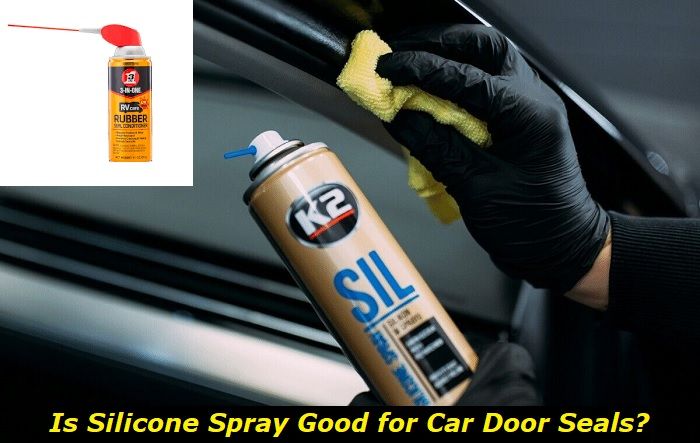2WD (two-wheel drive) is a driving mode involving the transfer of power from the powertrain or engine to two of a vehicle's four wheels. Your 4WD vehicle will be able to switch to 2WD, but AWDs (all-wheel drive) can't do so, in most cases. Now what's causing your transfer case to make noises when driving in 2WD?
You may be hearing a grinding, clashing, clunking, humming, ratcheting, squeaking, or growling noise coming from the transfer case (T-case) while driving in 2WD (2Hi). This could be because of a mechanical fault such as problems in the (integrated wheel end) system or the T-case components.

See how to get rid of some of the above-mentioned sounds as you read further. We've done extensive research even on related TSBs (technical service bulletins) and automotive repair forum recommendations
Driving in 2WD or Switching from 4WD To 2WD
2WD is the most commonly used option on vehicles. It's suitable for moving on flat, dry roads at normal speeds. For instance, when your truck is hauling a load or pulling a trailer. 2Hi specifically means that all the power is being transferred to the wheels at the rear. The power will be shared with a 50:50 ratio on each side.
Your car is a front-wheel drive (FWD) if the power is going to the front wheels, while the vehicle will be referred to as a rear-wheel drive (RWD) if the power is going to the rear wheels.
We stated earlier that 4WDs can switch to 2WD, but AWDs can't do so in most cases. AWDs that feature the automatic 4WD mode will be able to make this switch.
How the Transfer Case Works
The transfer case is a component of the drivetrains of 4WDs, AWDs, and other cars or trucks whose axles are multiple-powered. It sends power to the front and rear axles (from the transmission) via the drive shafts.
T-cases also synchronize the difference between the rotation of the wheels at the front and back in high-speed AWD-4WD systems. They also prevent the front driveshaft from working with the front differential while in driving in 2WD. They may possess one or more sets of low-range gears for off-roading.
The axle shaft is linked to the IWE vacuum hub when the IWEs are employed. This lets the T-case power the front wheels after engaging the front output.
Sources of Transfer Case Noise: Diagnoses and Fixes
The abnormal transfer case sounds mentioned earlier are symptoms of various faults in the unit when you shift into 2WD. You can suspect that the sound is coming from the T-case if it's emanating from the center of the vehicle. That's where the unit case is usually situated.
1) IWE System Fault
The fault in the IWE system causing the grinding noise may be a bad IWE solenoid or damage in the vacuum (vac) lines. You'll have to change anyone of these parts that's causing the problem. Your vehicle's entire IWE may have to be swapped out, depending on how long you've been hearing the abnormal sound.
Diagnose the IWE system by physical inspection and using a vacuum tester (gauge) to check the valves that connect to the engine and the IWE solenoid. See a description of the system below.
Description of the Vacuum Lines
The integrated wheel end vac system features the vac box which may be close to the battery tray. Vac lines run from the box to the engine (with a valve in-between) where they may come off the intake right at the back of the throttle body.
The lines also connect to the IWE solenoid (with a valve between) which is at the back of the battery on the firewall. IWE solenoids link to the IWE actuators at the wheels. You'll see the actuator vent tubes at the wheels linking to the engine bay. They're normally open on the end in the engine compartment.
Note: There are Ford Technical Service Bulletins that have been issued to deal with an intermittent grinding noise coming from the transfer case because of faults in an IWE. Find the one that fits your scenario. For example, TSBs 20-2278 and 20-2028.
2) Damaged Snap Ring
As stated earlier, transfer cases feature output shafts that transfer power to the axles. Certain vehicle manufacturers fix a snap ring at the output shaft's tail end to ensure its stability and proper connection with the gears. For example, General Motors (GM).
The snap ring may break, causing the tail end to be loose. This will lead to a misalignment with the gears as the shaft is moving in and out. Abnormal metal-to-metal contact will take place because of this and you'll start hearing the grinding noise when in 2WD or shifting between it and 4WD. Any broken snap ring must be replaced.
3) Worn-out Transfer Case Bearings
This could be the case when you start hearing a grinding noise while driving above 10 to 15 miles per hour. It means that it's time to replace the bearings.
The transfer case will have to be removed, disassembled, and examined for worn-out components-particularly the bearings. This will cost you a lot, so it's advisable to get a used T-case to replace the old one.
4) Diagnosing the Clunking Noise
Do this by switching the vehicle on and shifting into 2Hi for rear-wheel drive. Move the vehicle forward and keep an ear out for the clunking sound. If you notice the noise at this moment, it means that the center axle or clutch plate of the unit might be damaged or deformed.
5) Diagnosing the Ratcheting Noise
It's most likely a hub that's making the sound when you shift the transfer case into 2WD and back up to unlock the hubs. The hubs may not be released completely after the process. The passenger side may not be unlocking while switching from 4WD to 2WD, even with a long backup after the switch.
Resolve the issue by stopping your vehicle and checking the T-case to ensure that its lever is completely in the 2Hi position. Then you can reverse slowly in a straight direction (at least 2 meters or 7 feet).
Additionally, a hub may be mechanically locked if the ratchet sound is being produced continuously in one wheel while moving forward. This could be due to a wrong installation or damage. Uninstall the hubs and examine them for defects. Give more attention to the hub that's facing the noisy side.
Note: Ratcheting sounds don't necessarily mean that the hub is damaged.
6) Diagnosing the Clashing Noise
Are you hearing a clashing noise when switching from 2WD to 4WD as if the transfer case gears are clashing? You may notice the gear noise speed slowing down as you reduce the vehicle's speed. Then the sound may stop after a few seconds.
Diagnose the abnormal sound by first removing the T-case motor and engaging it in 4WD and 2WD as it is being uninstalled. You can confirm that the motor is defective if the motor is making the noise and binding.
However, if the motor isn't producing the sound, binding, or experiencing problems; then it's most likely the T-case itself that's faulty. Examine the fluid level in the unit and drain it to check for pieces of metal.
It's advisable to run the vehicle on a lift with all its wheels off traction to diagnose the problem and trace its specific location. You can use this method to check if the T-case is producing a clashing sound when the vehicle is decelerating.
Note: Up and down play may be detected in the rear axle wheel bearings, especially if they're pressed onto the axle shafts.
7) Grinding Noise Coming from the Center of the vehicle When Driving at 30mph
This is most likely a transfer case issue, especially if the sound goes away as you slow down or switch to 4WD. You should hear the noise while the T-case is in neutral. The noise may be coming from the unit's front output side or chain. Check these areas or components to ascertain the source.
You can narrow the issue down to the T-case by removing the whole front driveshaft and going for a drive. If there's no noise during the drive, then it's most likely the T-case.
Conclusion
Most of the fixes will require you to replace the affected parts or systems. The abnormal noises can be troublesome and will reduce the quality of your driving experience. They usually indicate that there's a more serious issue to deal with in connected/related systems or components.
It's advisable not to drive further with the noises you're hearing because you may be doing more damage. Replacing the affected components should be the preferred option over repairing them. However, this depends on the fault being fixed and your budget.
About the authors
The CarAraC research team is composed of seasoned auto mechanics and automotive industry professionals, including individuals with advanced degrees and certifications in their field. Our team members boast prestigious credentials, reflecting their extensive knowledge and skills. These qualifications include: IMI: Institute of the Motor Industry, ASE-Certified Master Automobile Technicians; Coventry University, Graduate of MA in Automotive Journalism; Politecnico di Torino, Italy, MS Automotive Engineering; Ss. Cyril and Methodius University in Skopje, Mechanical University in Skopje; TOC Automotive College; DHA Suffa University, Department of Mechanical Engineering






Add comment